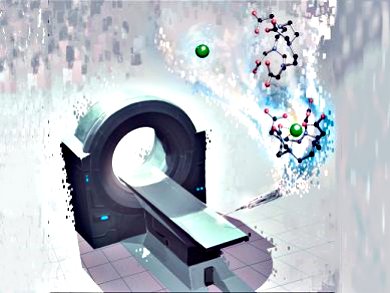Radioisotopes for therapy destroy tissue by emitting β- or α-particles. The radioisotope thus has to selectively accumulate in the diseased tissue (e.g., tumor), mostly through binding to a targeting vector, and should be eliminated unchanged if they do not reach the targeted tissue. Ions of metallic elements must be tightly bound in complexes that avoid non-specific deposition of their “free” form: these complexes must exhibit high thermodynamic stability and kinetic inertness and the ligands must rapidly and selectively complex the metallic radioisotope even in highly dilute solutions.
Petr Hermann and colleagues, Charles University, Prague, Czech Republic, have investigated scandium(III) complexes with diethylenetriamine-N,N,N′,N′′,N′′-pentaacetic acid (DTPA) and 1,4,7,10-tetraazacyclododecane-1,4,7,10-tetraacetic acid (DOTA) in the solution and solid state. They found a surprisingly high value of the last DOTA dissociation constant (pKa = 12.9) by using potentiometry and NMR spectroscopy. Stability constants of scandium(III) complexes were determined as very high (log KScL 27.43 and 30.79 for DTPA and DOTA, respectively) and both complexes were fully formed even below pH 2. Additionally, complexation of DOTA with the Sc3+ ion is much faster than with trivalent lanthanides and proton-assisted decomplexation of the [Sc(dota)]-complex is much slower than that for [Ln(dota)]-complexes.
Therefore, DOTA and its derivatives seem to be very suitable ligands for scandium radioisotopes, because the ligand perfectly matches the coordination requirements of the metal ion.
- Thermodynamic and Kinetic Study of Scandium(III) Complexes of DTPA and DOTA: A Step Toward Scandium Radiopharmaceuticals,
Miroslav Pniok, Vojtěch Kubíček, Jana Havlíčková, Jan Kotek, Andrea Sabatie-Gogová, Jan Plutnar, Sandrine Huclier-Markai, Petr Hermann,
Chem. Eur. J. 2014.
DOI: 10.1002/chem.201402041



